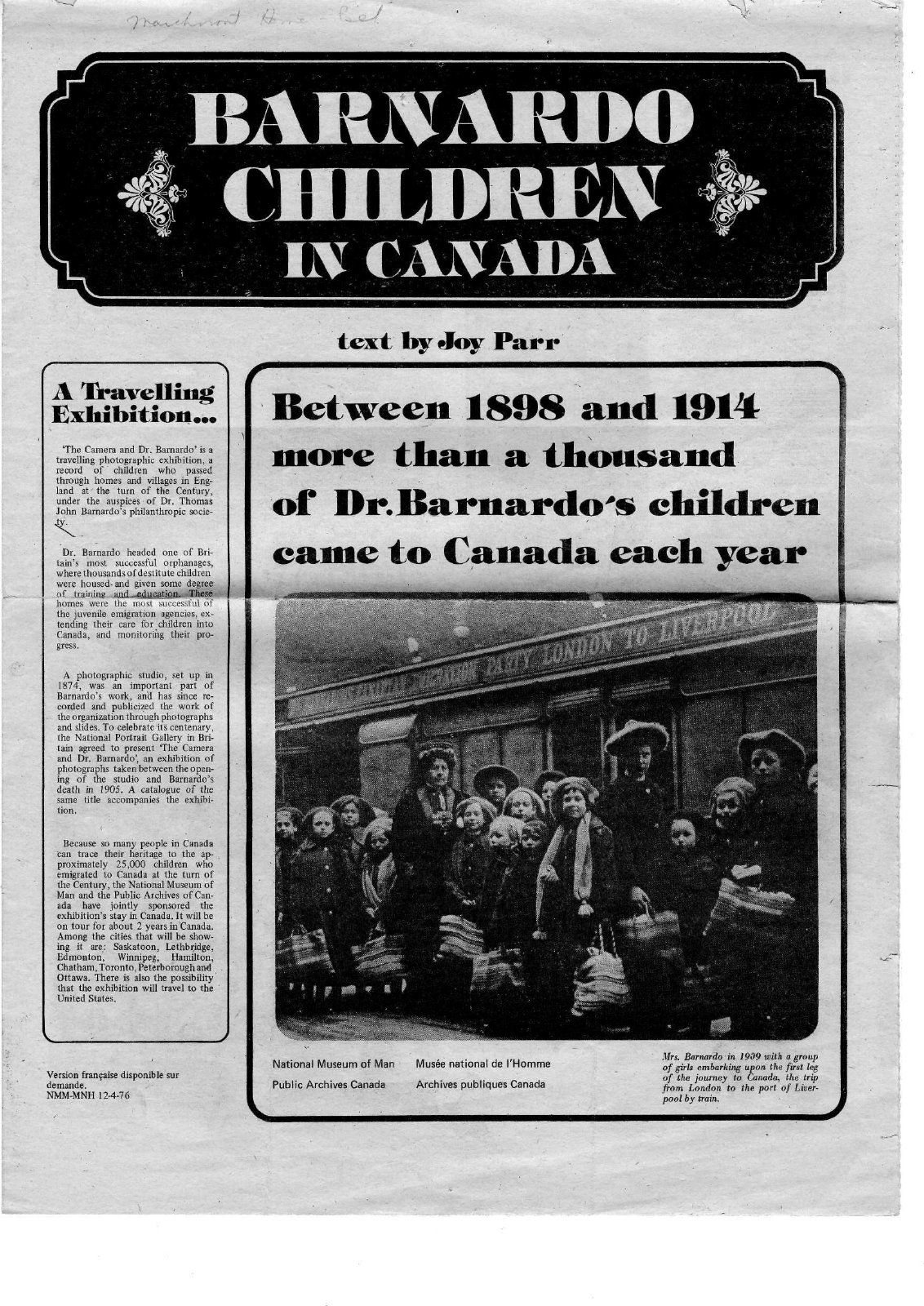Settlement started centuries ago, but there have been new and different patterns of immigration throughout all of Ontario's history, right up to the present day. From 2015 onwards there has been constant debate about taking in refugees from war-torn countries such as Syria. Before Canada gained its independence, immigration was largely dictated by Britain's wishes - including taking people directly from the United Kingdom. We also had a wave of child immigration after the Second World War, after many children were orphaned, and another wave during the Vietnam War, primarily refugee children from Vietnam, Cambodia, and Laos.
In the 1800s and 1900s Ontario accepted a large number of children - some from Irish families escaping famine and poverty, others who were wards of the Crown and were being resettled away from the crowded cities of England.
Receiving homes were opened in Belleville and Galt, Ontario, where children would be sent from overseas and then distributed to families in Ontario.
Many of these children were not adopted into loving homes that treated them like a new member of the family. Instead, they were often sent first to orphanages and religious organizations, who would find them work placements in houses as maids and servants, or in factories or farms. Many children were considered free labour by their "adoptive" families, and treated harshly for being foreign, having accents, and bringing evidence of their poverty - cheap clothes, heads shaved from lice, and little in the way of reading and writing skills.
Only now, in the 2010s, are historians exposing what children really suffered through and how badly they were treated by families here in Canada. Many children report being beaten if they didn't work to satisfaction, which was hard as many of them were starved, forced to sleep outdoors or in farm buildings, and barred from basic hygiene and health habits. Many children died under these conditions, while others grew up to fight for an official apology from the UK government (which was granted in 2010). Many Ontarian families came from this "immigration."
Back in England, the child placement programs (done by the Children's Home Society in the 1830s, called "Home Children" when a new program was founded in 1869, and the "Child Migrant Program" into the 1900s) was advertised as saving small vulnerable children from inadequate family care, the dirt and smog of the city, and an almost inescapable life of crime and hunger.
Importantly, these programs were often run by church groups, women's auxiliaries, and charitable societies with a high rate of women in administrative and directorial positions. Reading the following four-page pamphlet shows as many women fighting to bring British children to Canada as men in positions of power.

Courtesy the Belleville Public Library. [Learn More]



